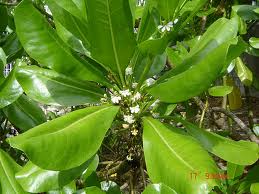|
This group of plants contains many annuals, however, only one is commonly grown in gardens. P. frutescens will grow about 3 feet high and is bushy and self-branching. The leaves resemble those of the Sweet Basil, but may also be ruffled. They are fuzzy, dark purple or green and grow up to 3 inches long. This plant is found wild in India and China and belongs to the Mint family, Labiatae. Their flowers aren't flashy as these plants are mainly grown for their ornamental foliage, which is also edible. The Green Perilla is a popular potherb in the Orient. Purple Perilla (P. frutescens variety atropurpurea) has pretty curly, dimpled leaves with wavy, deeply cut edges; it is a lanky plant. Both of the varieties are resistant to heat and humidity and they mature so quickly that they can be cultivated in northern states with success. Home gardeners usually confuse the purple Perilla with purple Basil. Though both of these plants can escape the garden, Perilla may become a weed, while Basil is easily controlled.
Pot Cultivation
These plants should be grown, 6 to 12 inches apart, in well-drained, moist soil and have exposure to sun half the day or more. In warm, humid weather, these plants grow quickly and should have their tops pinched off to maintain a neat appearance. They may be fed with plant food. The whole plants may be taken for cooking, or just the tender tips of mature plants.
Propagation
Seeds that have been pre-chilled a week in the refrigerator may be started indoors at a 65- to 70-degree temperature, 6 to 8 weeks before it's safe to plant outdoors. They should be sown in pots filled with sifted compost consisting of loam and leaf mold, with a sprinkling of sand. Cover the seeds lightly with soil and place a piece of glass over the container. If kept moist, they will soon germinate and quickly grow. They may also be sown outdoors where they are to grow when the soil is warm. Don't cover the seeds because they need light to germinate. They often re-seed themselves.
 |
P. frutescens. |
Varieties P. frutescens. |